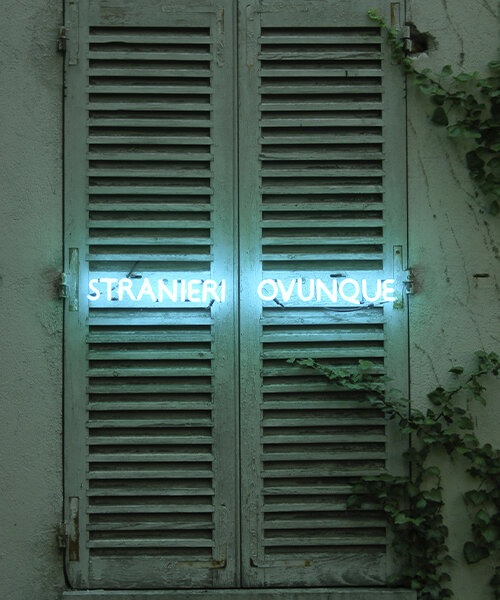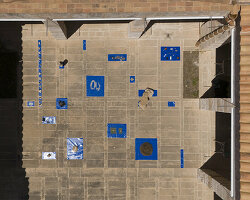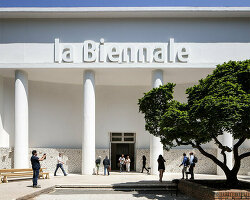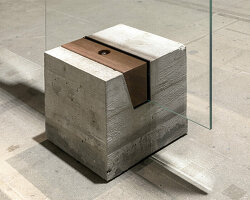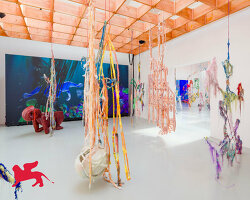what to expect at the venice art biennale 2024
The 60th International Art Exhibition, titled Stranieri Ovunque – Foreigners Everywhere, is opening to the public from Saturday, April 20 to Sunday, November 24, 2024, at the Giardini and the Arsenale in Venice. Curated by Adriano Pedrosa and organized by La Biennale di Venezia, the Venice Art Biennale 2024 unites 332 artists and presents two sections: the Nucleo Contemporaneo and the Nucleo Storico. Its main focus is to spotlight artists from diverse backgrounds, giving space and visibility to previously marginalized groups, such as immigrants, expatriates, queer people, and indigenous individuals. Special attention is given to outdoor projects, both in the Arsenale and the Giardini, where a performance program is being planned with events during the pre-opening and closing weekend of the 60th Exhibition. The pre-opening will occur on April 17, 18, and 19; the awards ceremony and inauguration will be held on April 20, 2024.
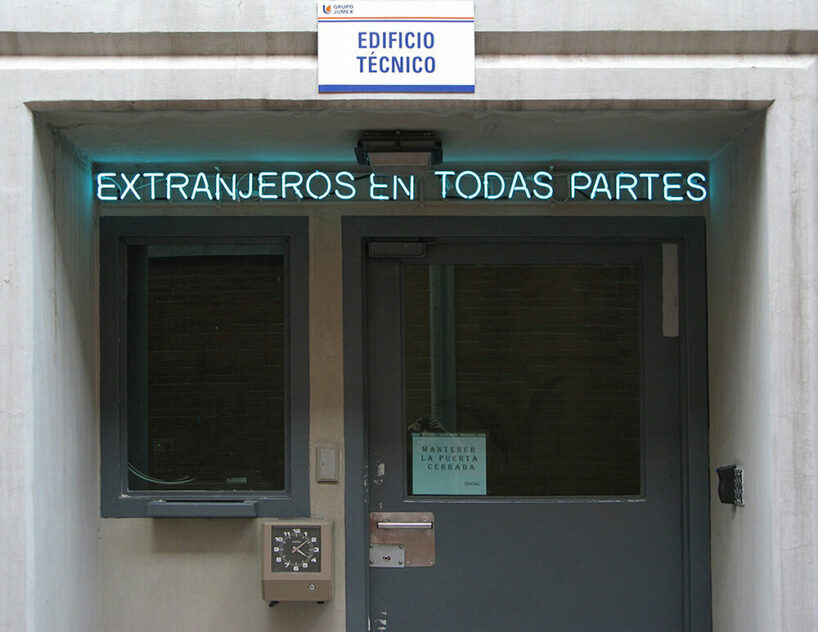
Claire Fontaine: Foreigners Everywhere – Spanish (2007) | suspended, wall or window mounted neon, framework, electronic transformer & cables | 98 × 2.16 × 45 cm | The Traveling Show, curated by Adriano Pedrosa, La Colección Jumex, Mexico | image © Studio Claire Fontaine, courtesy the Studio & Mennour
Stranieri Ovunque – Foreigners Everywhere
Stranieri Ovunque – Foreigners Everywhere at the Venice Art Biennale 2024 draws on a series of works started in 2004 by the Paris-born and Palermo-based Claire Fontaine collective. The works consist of neon sculptures in different colors that render in a growing number of languages the words ‘Foreigners Everywhere’. The phrase comes, in turn, from the name of a Turin collective that fought racism and xenophobia in Italy in the early 2000s. ‘The expression Stranieri Ovunque has several meanings. First of all, that wherever you go and wherever you are you will always encounter foreigners — they/we are everywhere. Secondly, that no matter where you find yourself, you are always truly, and deep down inside, a foreigner,’ reiterates Adriano Pedrosa during the press conference held today (January 31st, 2024). Tying it back to the Venice Art Biennale 2024, the curator states that artists historically traveled and moved about for various reasons, an intensifying trend since the 20th century despite growing restrictions on people’s movement. The main exhibition thus highlights artists who are foreigners, immigrants, expatriates, diasporic emigres, exiled individuals, or refugees. The focus is primarily on those who have experienced migration between the Global South and the Global North, with key themes revolving around migration and decolonization.
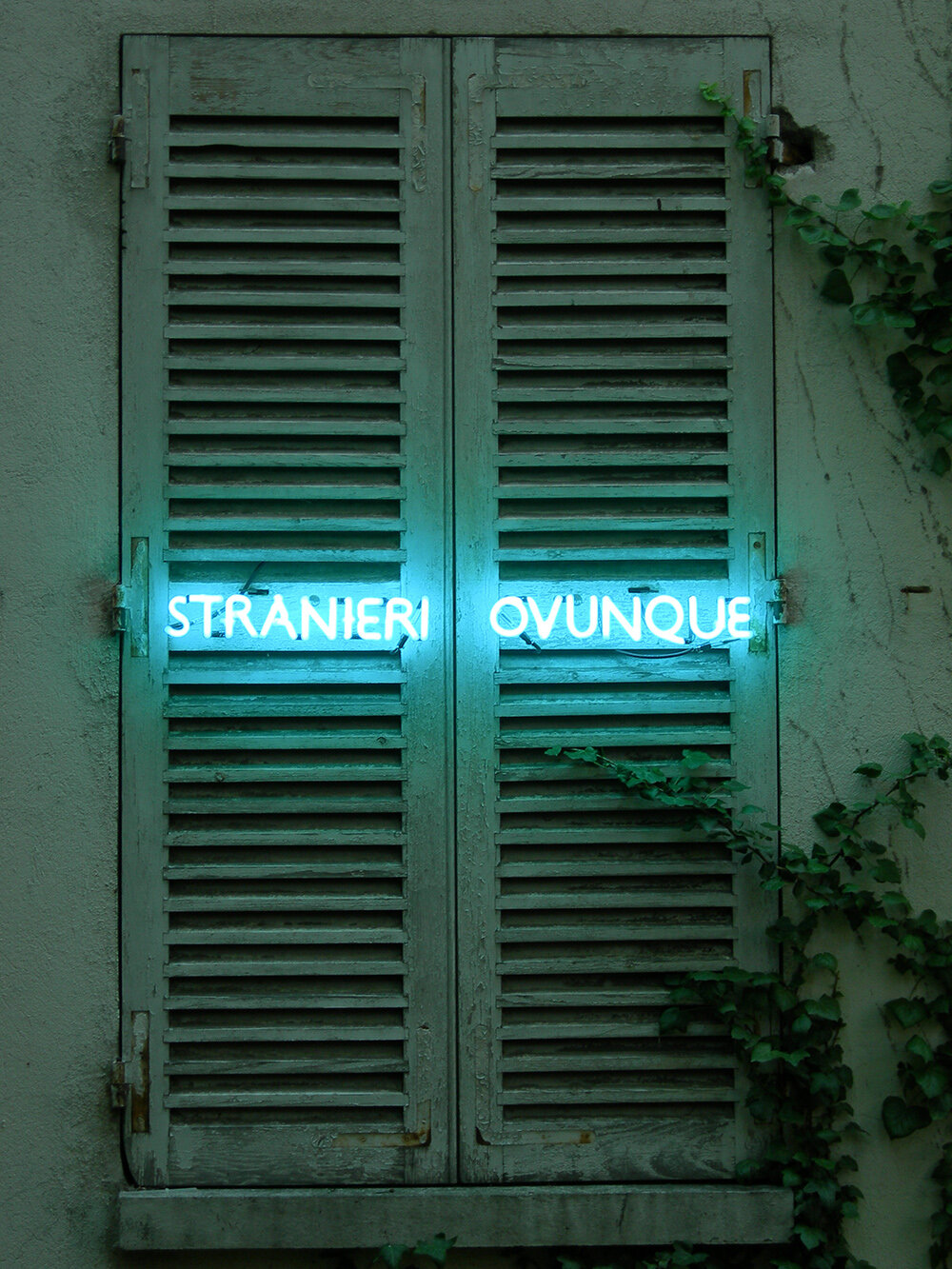
Claire Fontaine
: Foreigners Everywhere (Italian), 2004 – installation view | Cité internationale des arts Paris, Monmartre, Paris, 2004
| suspended, wall or window mounted neon, framework, electronic transformer and cables | image by and © Studio Claire Fontaine, courtesy the studio & Galleria T293
Nucleo Contemporaneo: the other and the queer
The first section of the exhibition, Nucleo Contemporaneo, deep dives into the meaning assigned to words referring to ‘the other,’ ‘the stranger,’ and ‘the outsider’ in the art world. Adriano Pedrosa elaborates: ‘The Italian straniero, the Portuguese estrangeiro, the French étranger, and the Spanish extranjero, are all etymologically connected to the strano, the estranho, the étrange, the extraño, respectively, which is precisely the stranger. Sigmund Freud’s Das Unheimliche comes to mind—The Uncanny in English, which in Portuguese has indeed been translated as ‘o estranho’– the strange that is also familiar, within, deep down side. According to the American Heritage and the Oxford Dictionaries, the first meaning of the word ‘queer’ is precisely ‘strange’, and thus the Exhibition unfolds and focuses on the production of other related subjects: the queer artist, who has moved within different sexualities and genders, often being persecuted or outlawed; the outsider artist, who is located at the margins of the art world, much like the self-taught artist, the folk artist and the artista popular; the indigenous artist, frequently treated as a foreigner in his or her own land.’
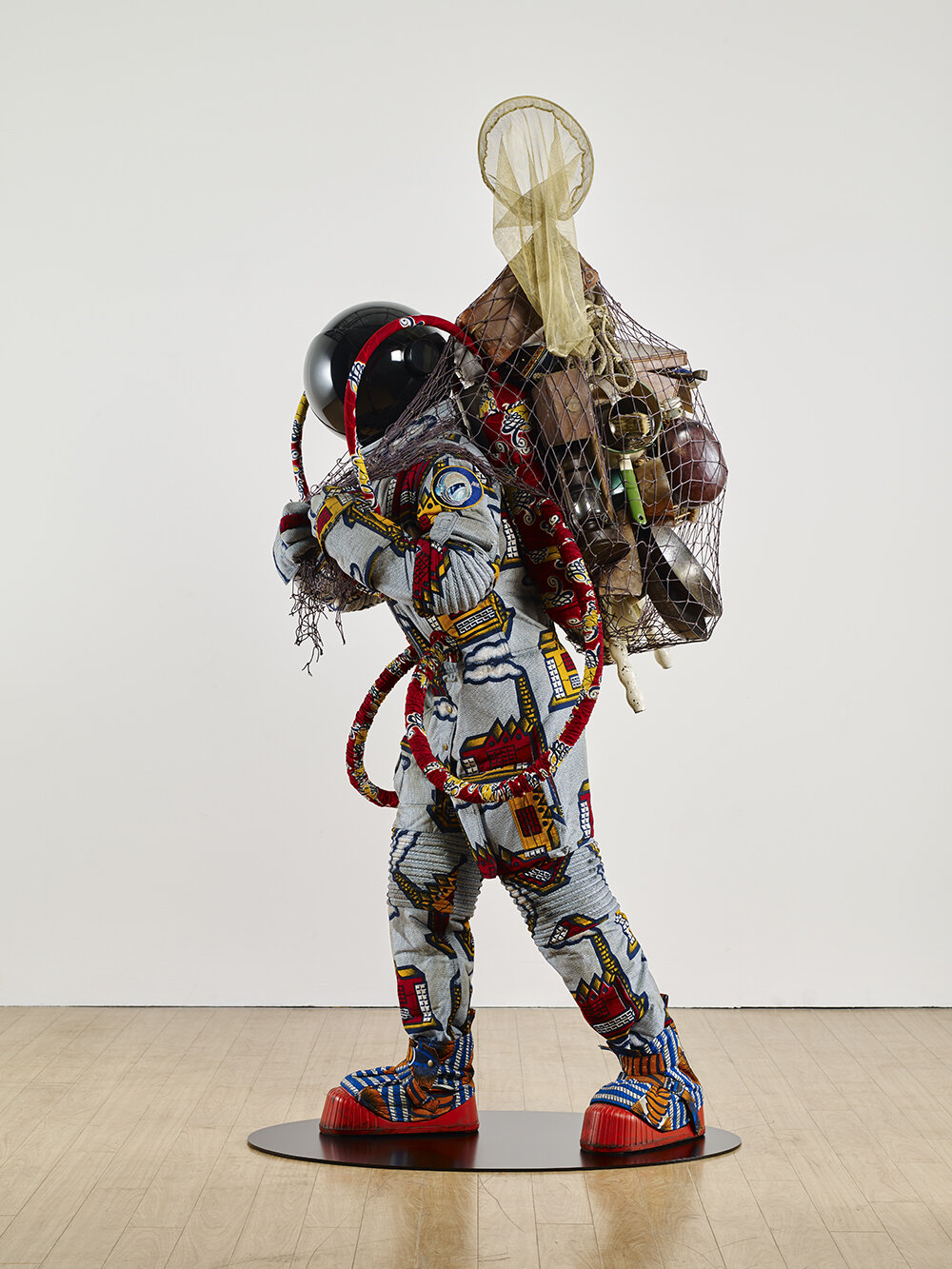
Yinka Shonibare: Refugee Austronaut II (2016) | fibreglass mannequin, Dutch wax printed cotton textile, net, possessions, astronaut helmet, moon boots & steel baseplate | 210 x 90 x 103 cm | image by Stephen White & Co. / © Yinka Shonibare CBE, courtesy the artist & James Cohan Gallery
Indigenous artists are prominently featured in the Biennale, with the Mahku collective from Brazil painting a monumental mural on the Central Pavilion’s facade and the Maataho collective from Aotearoa/New Zealand presenting a large-scale installation in the Corderie. Queer artists also appear throughout the exhibition, with a significant section dedicated to them in the Corderie — namely Erica Rutherford (Canada), Isaac Chong (China/Hong Kong), Elyla (Nicaragua), Violeta Quispe (Peru), and Louis Fratino (US). The Central Pavilion also hosts a focus on queer abstraction with works by artists like Evelyn Taocheng Wang (China) and others from Italy, the Philippines, and more. From Europe, three of its most remarkable female outsider artists are presented: Madge Gill (UK), Anna Zemánková (Czechia), and Aloïse (Switzerland).

Dean Sameshima: Anonymous Homosexual (2020) | acrylic on canvas | 30 x 40 cm | image courtesy the artist, Kristina Kite Gallery & Soft Opening / © Dean Sameshima
The Nucleo Contemporaneo will feature a special section in the Corderie devoted to the Disobedience Archive, a project by Marco Scotini, which, since 2005, has been developing a video archive focusing on the relationships between artistic practices and activism. In the exhibition, the presentation of the Disobedience Archive was designed by Juliana Ziebell, who also worked on the exhibition architecture of the entire International Exhibition. This section is divided into two main parts, especially conceived for our framework, focusing on films and videos: Diaspora activism and Gender Disobedience. The Disobedience Archive will include works by 39 artists and collectives between 1975 and 2023.
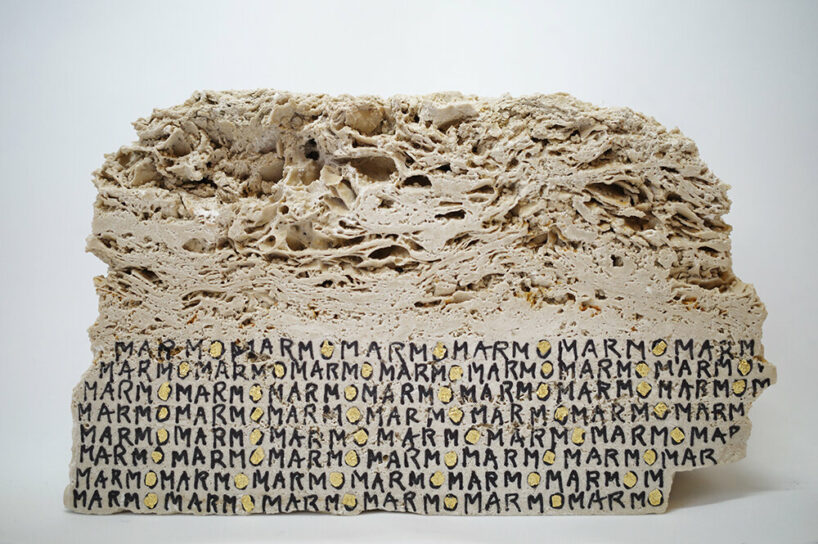
Greta Schödl: Marmo travertino piccolo – Scritture series (2023) | China and gold leaf on travertine marble | 14.5 x 8.5 x 3 cm | © Greta Schödl | image by Letizia Rostagno, courtesy the artist
nucleo storico: unpacking global modernism
The second section of Foreigners Everywhere, Nucleo Storico, features twentieth-century works from Latin America, Africa, Asia, and the Arab world. Works from these regions will be exhibited in some rooms, serving as a curatorial experiment to challenge Global Modernism’s boundaries and definitions. While European Modernism is well-documented, the modernisms of the Global South are often overlooked. The exhibit acknowledges how European Modernism spread worldwide, often through colonialism, and how artists from the Global South traveled to Europe to showcase their works. ‘It is difficult to establish a strict overarching chronology here as the processes may be quite singular in each country or region, often following their own idiosyncratic courses,’ notes Pedrosa during the conference.
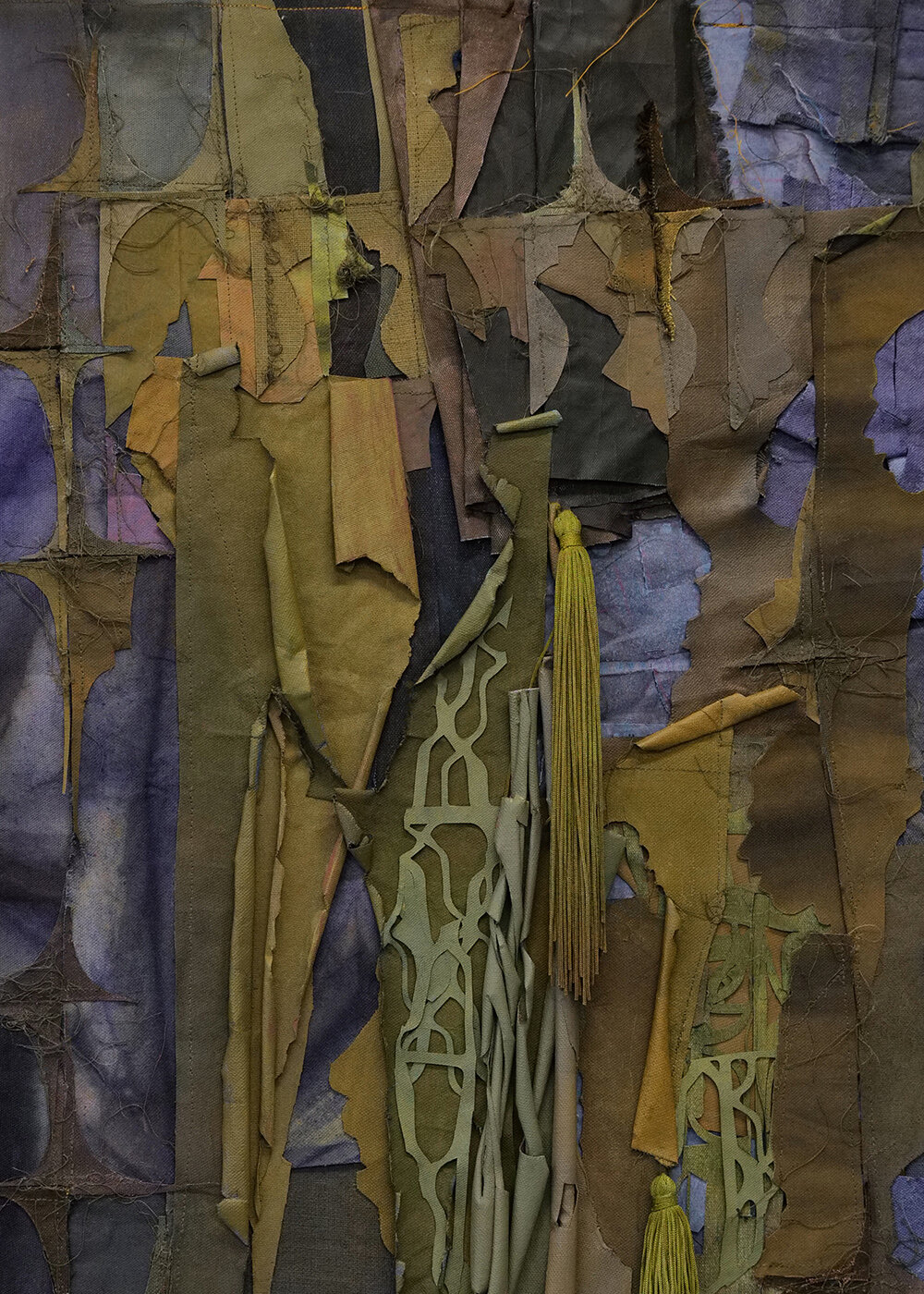
Nour Jaouda: Everything touches everything else – detail (2023) | dye and pigment on canvas, steel | 170 x 80 cm | image courtesy the artist / © Nour Jaouda
The Nucleo Storico in the Central Pavilion consists of three rooms: Portraits, Abstractions, and Italian artistic diaspora throughout the twentieth century. The two rooms that house the Portraits will include the works of 112 artists, mostly painted, but also works on paper and sculptures, covering a period between 1905 and 1990. This section contains artists from Korea and Singapore, who in the past were part of the so-called Third World, or indigenous Maori artists of historical importance, such as Selwyn Wilson and Sandy Adsett, from Aotearoa/New Zealand. Other countries include Chile (with Laura Haudig), China, Colombia (with Rómulo Rozo), Cuba, Egypt (with Inji Efflatoun), Ghana (with Grace Kwami), India, Iran, Lebanon, Iraq, Malaysia, Sri Lanka, Sudan, Tunisia, Turkey, Vietnam, and Zimbabwe. ‘The selection shows how the human figure has been explored in countless different ways by artists in the Global South, reflecting on the crisis of representation around the very figure that marked much of the art in the 20th century in the Global South. […] Most pictures depict non-white characters, which in Venice, at the heart of the Biennale, becomes an eloquent feature of this large, heterogeneous group, and the exhibition itself,’ continues the curator.
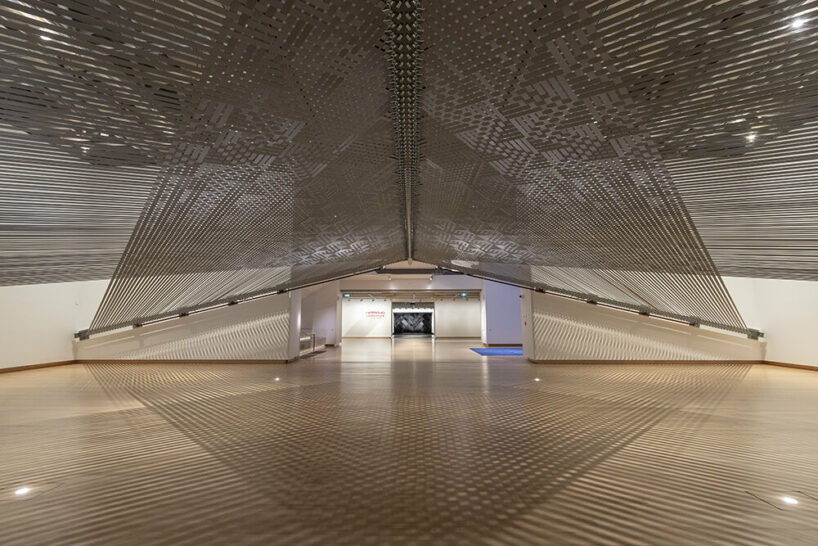
Mataaho Collective: Takapau (2022) | polyester hi-vis tie-downs, stainless steel buckles | variable dimensions | image by Maarten Holl, courtesy Te Papa
The room dedicated to Abstractions includes 37 artists: almost all of them will be exhibited together for the first time in unforeseen juxtapositions, thus hoping for unprecedented connections, associations, and parallelisms that go far beyond the rather simple categories proposed. Here, we highlight a painting by Etel Adnan (Lebanon), a textile-based picture by Mexican artist Eduardo Terrazas, and Samia Halaby from Palestine. Of particular interest here is a form of abstraction that breaks away from the European constructivist abstract geometric tradition, known for its strict orthogonal grid of verticals and horizontals. Instead, this abstraction prioritizes organic, curvilinear shapes and forms over rigid structures, often utilizing primary colors as a guiding principle.
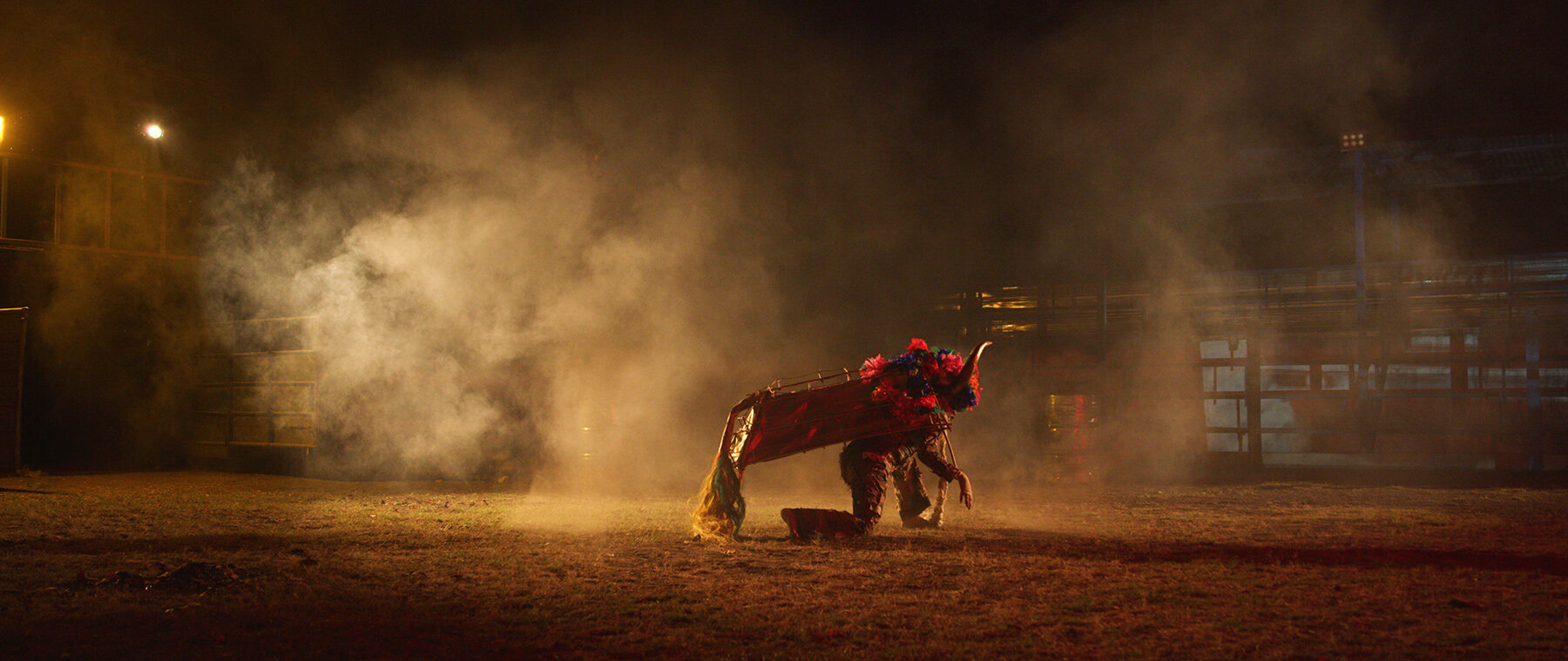
Elyla: Torita-encuetada (2023) | video performance | 9 min 43 sec | courtesy the artist | Made jointly with Nicaraguan Filmmaker Milton Guillén and music by Susy Shock – Luigi Bridges
A third room of the Nucleo Storico will be dedicated to the diaspora of 20th-century Italian artists who have traveled and moved abroad, integrating into local cultures and building their careers in Africa, Asia, Latin America as well as the rest of Europe and the United States; artists who have often played a significant role in the development of the narratives of Modernism outside of Italy. This room hosts the works of 40 Italian authors of first or second generation, placed in the glass and concrete gantry displays of Lina Bo Bardi (Italian who moved to Brazil, winner of the special Golden Lion in memory of the Biennale Architettura 2021). Featured artists include Lidi Prati (Argentina), Bona Pieyre de Mandiargues (France), Nenne Sanguineti Poggi (Ethiopia and Eritrea), and Gianni Bertini (France).
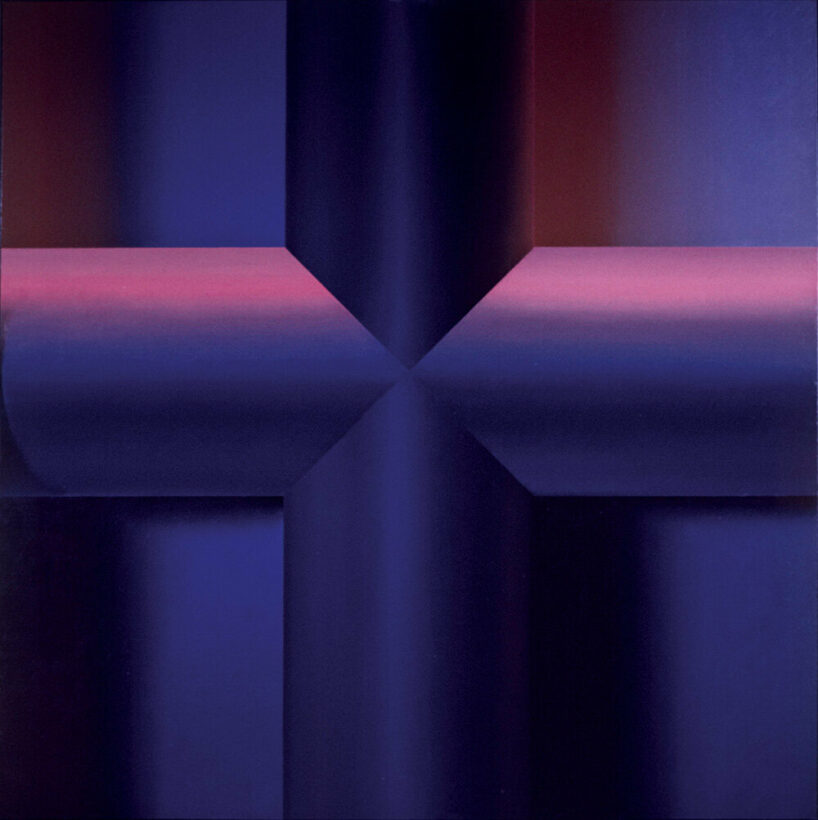
Samia Halaby: Black is Beautiful (1969) | oil on canvas | 167.5 x 167.5 cm | courtesy the artist; Sfeir-Semler Gallery
In the course of the research, Pedrosa points out two different but related elements that have emerged in a rather organic way and have been developed to the point of imposing themselves as the leitmotiv of the whole Biennale Arte 2024 show. The first is textiles, explored by many artists, starting from key figures in the Nucleo Storico to many authors present in the Nucleo Contemporaneo. New artists include Bordadoras de Isla Negra (Chile), Bouchra Khalili (Morocco), Dana Awartani (Palestine-Saudi Arabia), Frieda Toranzo-Jaeger (Mexico), and Liz Collins (US), Pacita Abad (Philippines), and Yinka Shonibare (London).
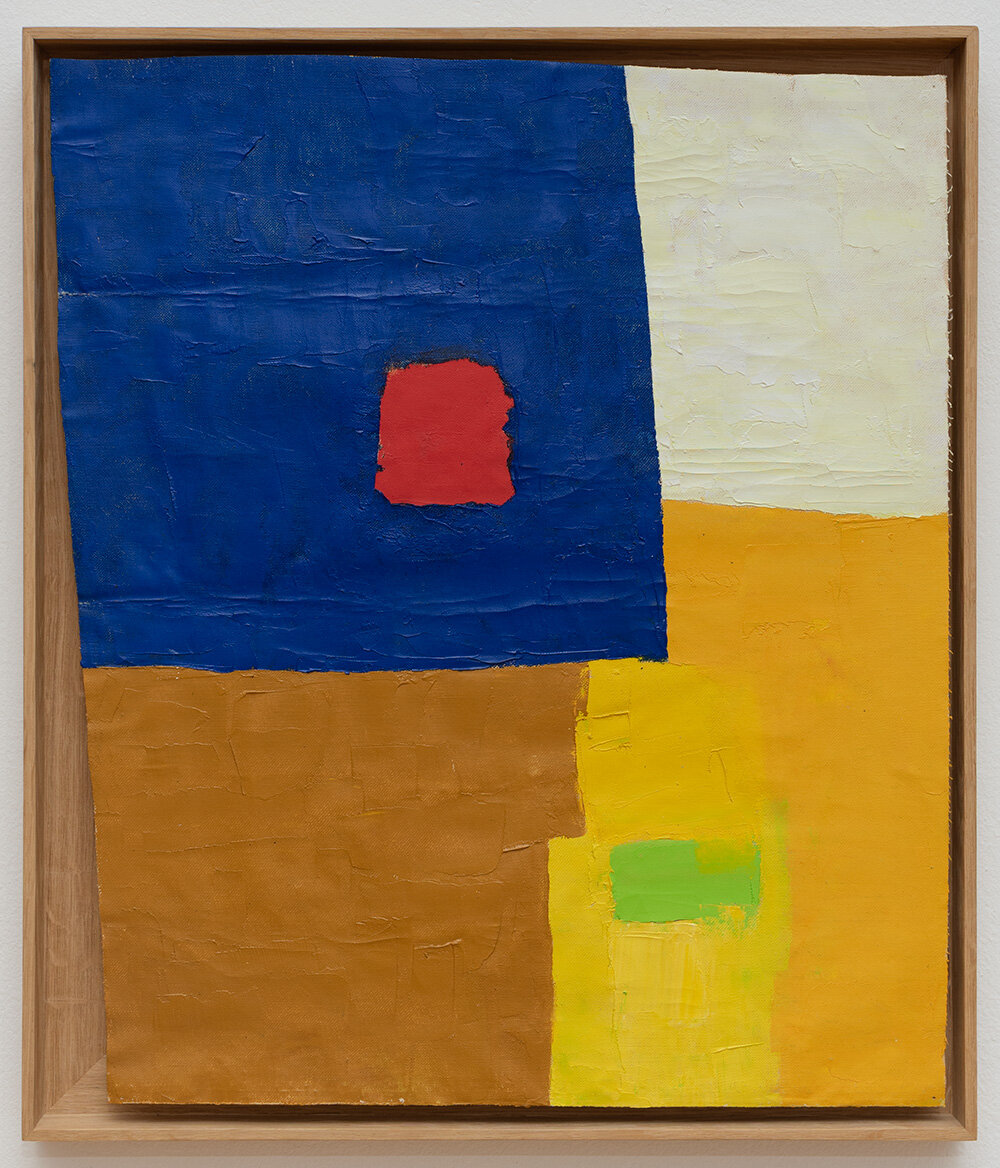
Etel Adnan: Untitled (1965) | oil on canvas | 50 x 43.1 cm | courtesy the artist’s estate & Sfeir-Semler Gallery
‘These works, the textile-based works, which are one of the motifs in the exhibition, revealed an interest in craft, tradition, and the handmade and techniques that were at times considered other or foreign, outsider or strange, in the last larger field of visual arts,‘ comments the curator. The second element represents artists – many of them indigenous – bound by blood bonds. Tradition also plays an important role here: transmitting knowledge and practices from father or mother to son or daughter or between siblings and relatives. Spotlighting this series are Andrés Curruchich and his granddaughter Rosa Elena from Guatemala; Fred Graham and his son Brett from Aotearoa, New Zealand; Jewad Selim and his wife, Lorna — among others.
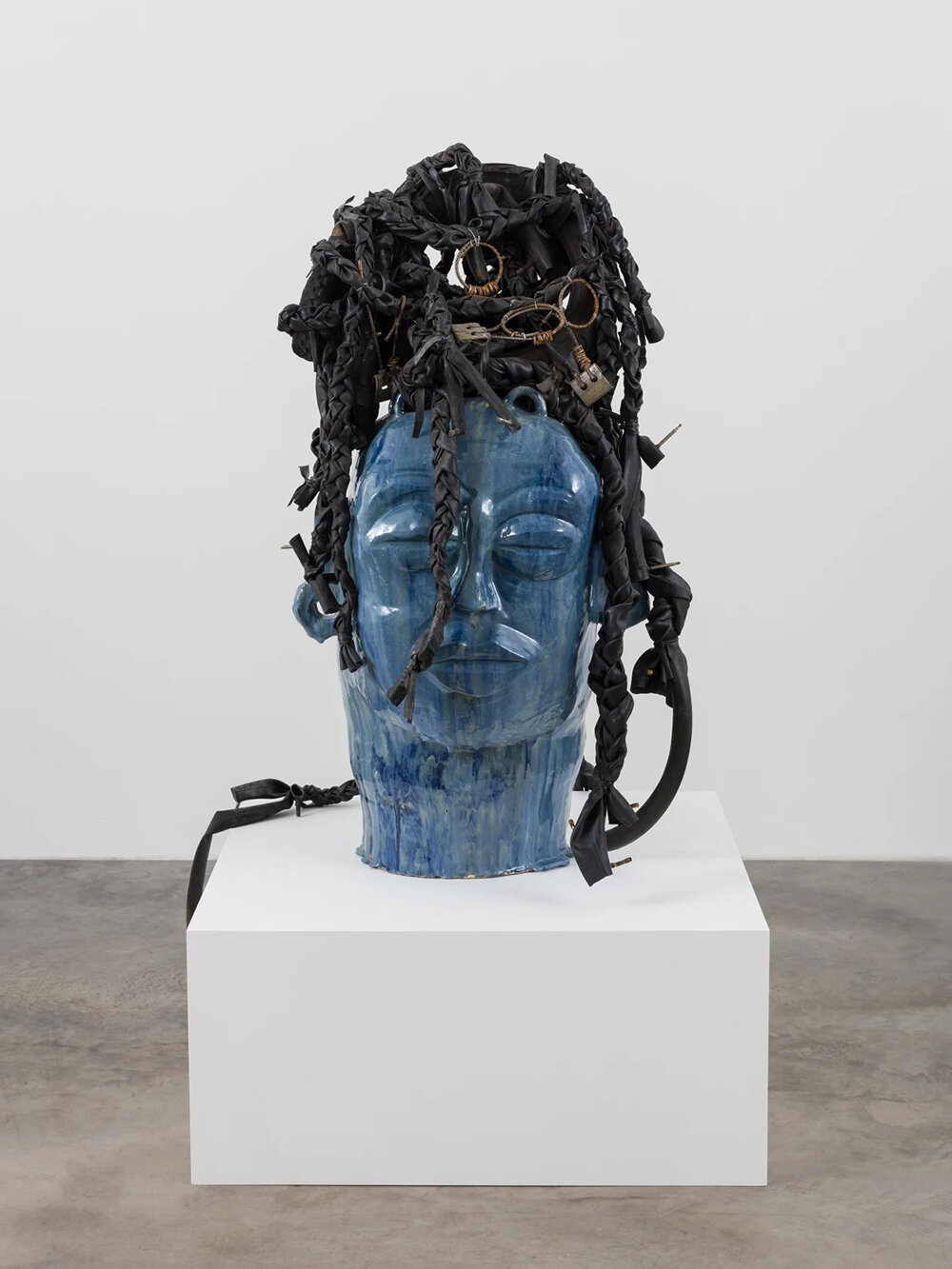
Leilah Babirye sculpture | image courtesy the artist
As for the catalog and the short guide of the Venice Art Biennale 2024, the curatorial team has invited over a hundred authors from different parts of the world to write the more than 300 artists entries in the book, privileging a polyphonic approach to the publication. The catalog also features two interviews and academic essays. You can watch the full press conference of the 60th International Art Exhibition, held by President Roberto Cicutto and Curator Adriano Pedrosa, on YouTube here.
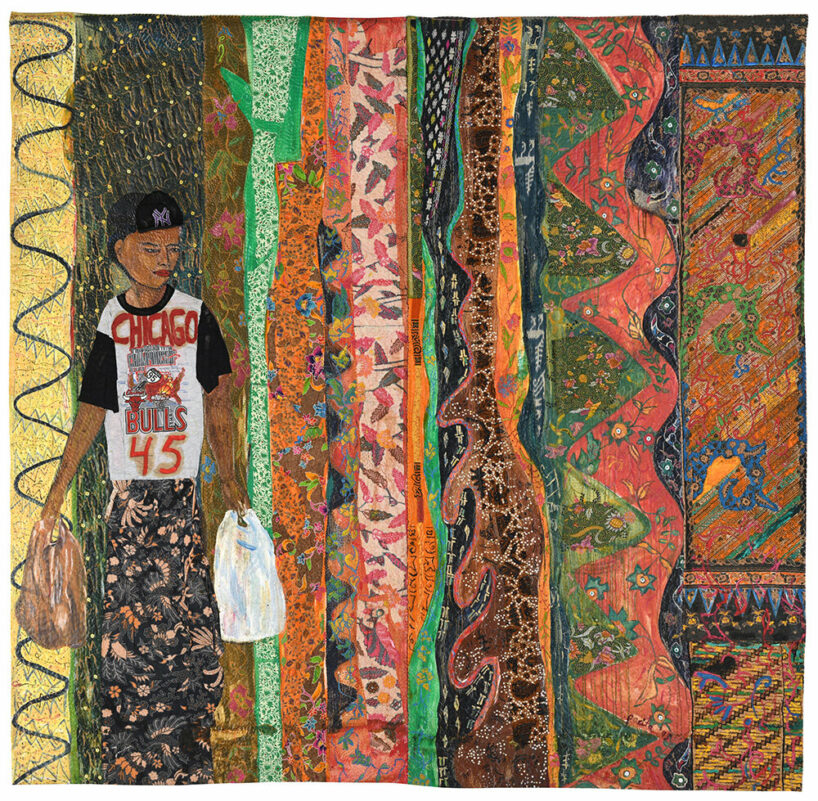
Pacita Abad: You Have to Blend in before You Stand Out (1995) | oil, painted batik cloth, sequins, buttons on stitched & padded canvas | 294.6 x 297.2 cm | Image by Peter Lee, courtesy Pacita Abad Art Estate
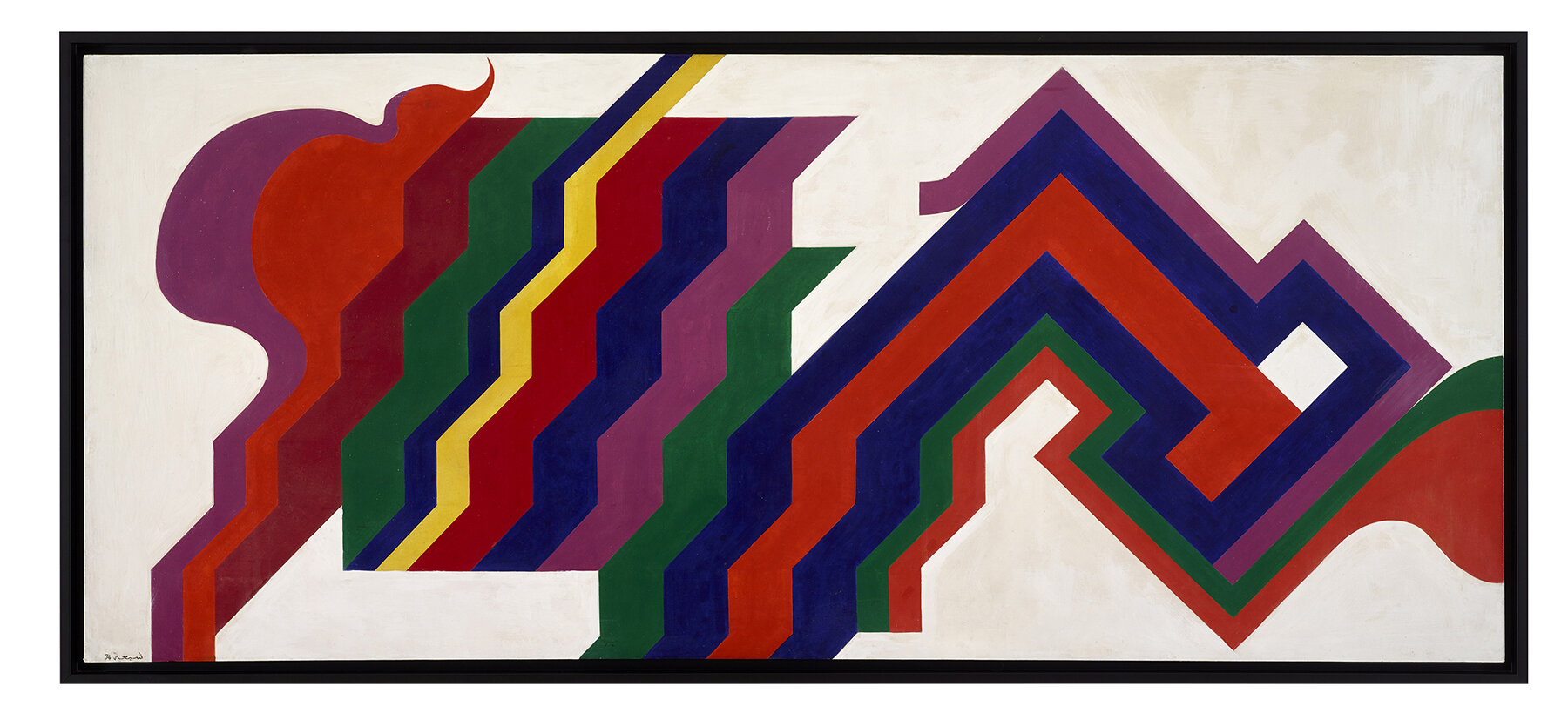
Mohamed Chabâa: Composition (1974) | acrylic on canvas | 94 x 220 cm | image © Maria and Mansour Dib, courtesy Ramzi and Saeda Dalloul Art Foundation
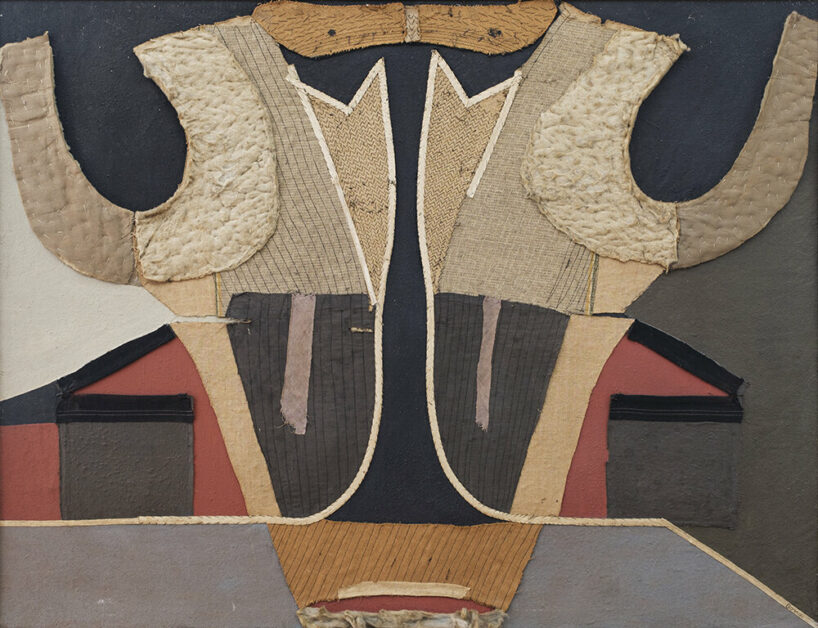
Bona Pieyre de Mandiargues: Toro Nuziale (1958) | assemblage | 90 x 116 x 2.5 cm | courtesy Sibylle Pieyre de Mandiargues / Private collection
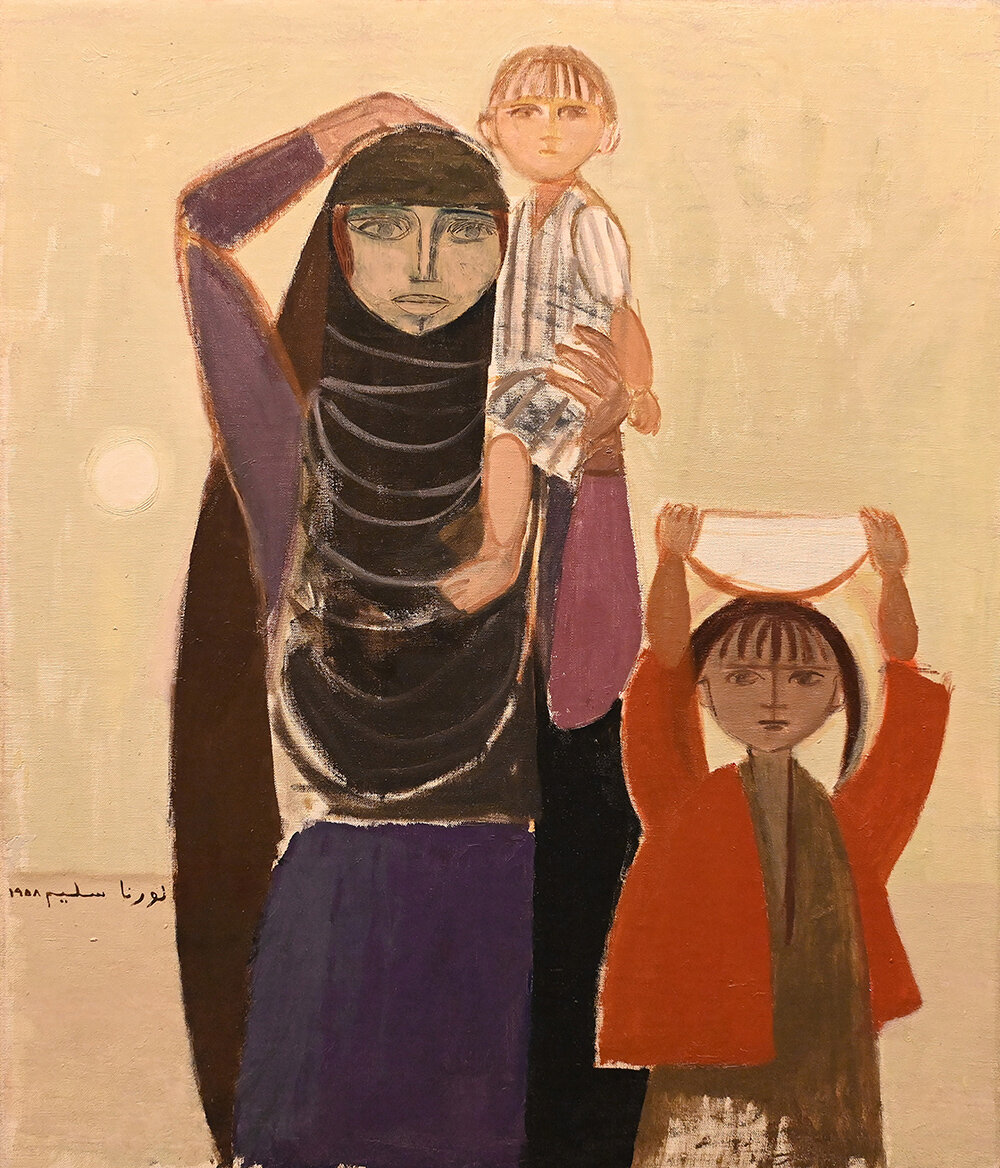
Jewad Selim: Woman and a Jug (1957) | oil on canvas | 72 x 52 cm | Private Collection | image © Anthony Dawton, courtesy Meem Gallery
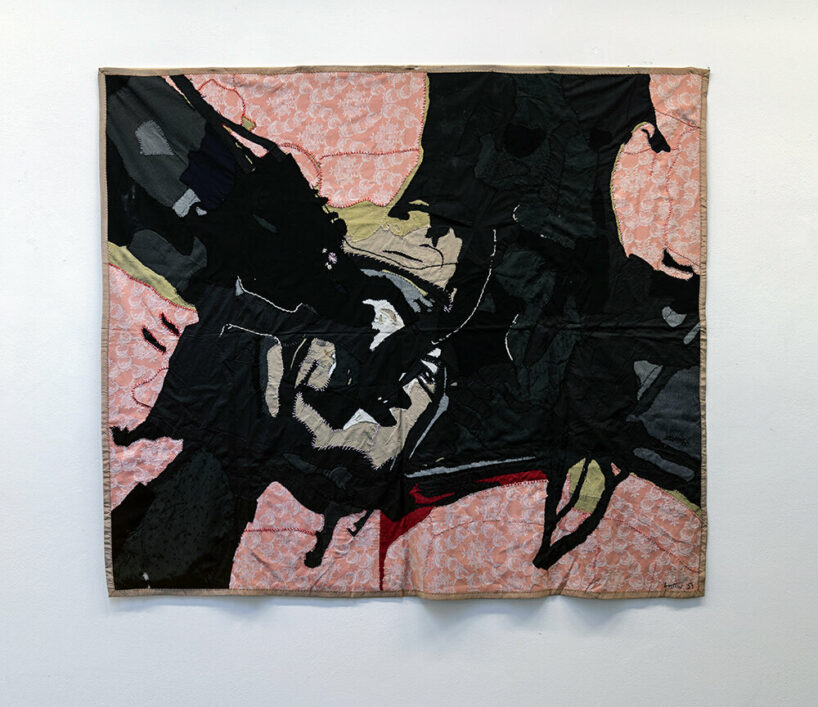
Gianni Bertini: La Toile de Penelope (1959) | textile collage | 146 x 165 cm | courtesy Thierry Bertini & Frittelli Arte Contemporanea
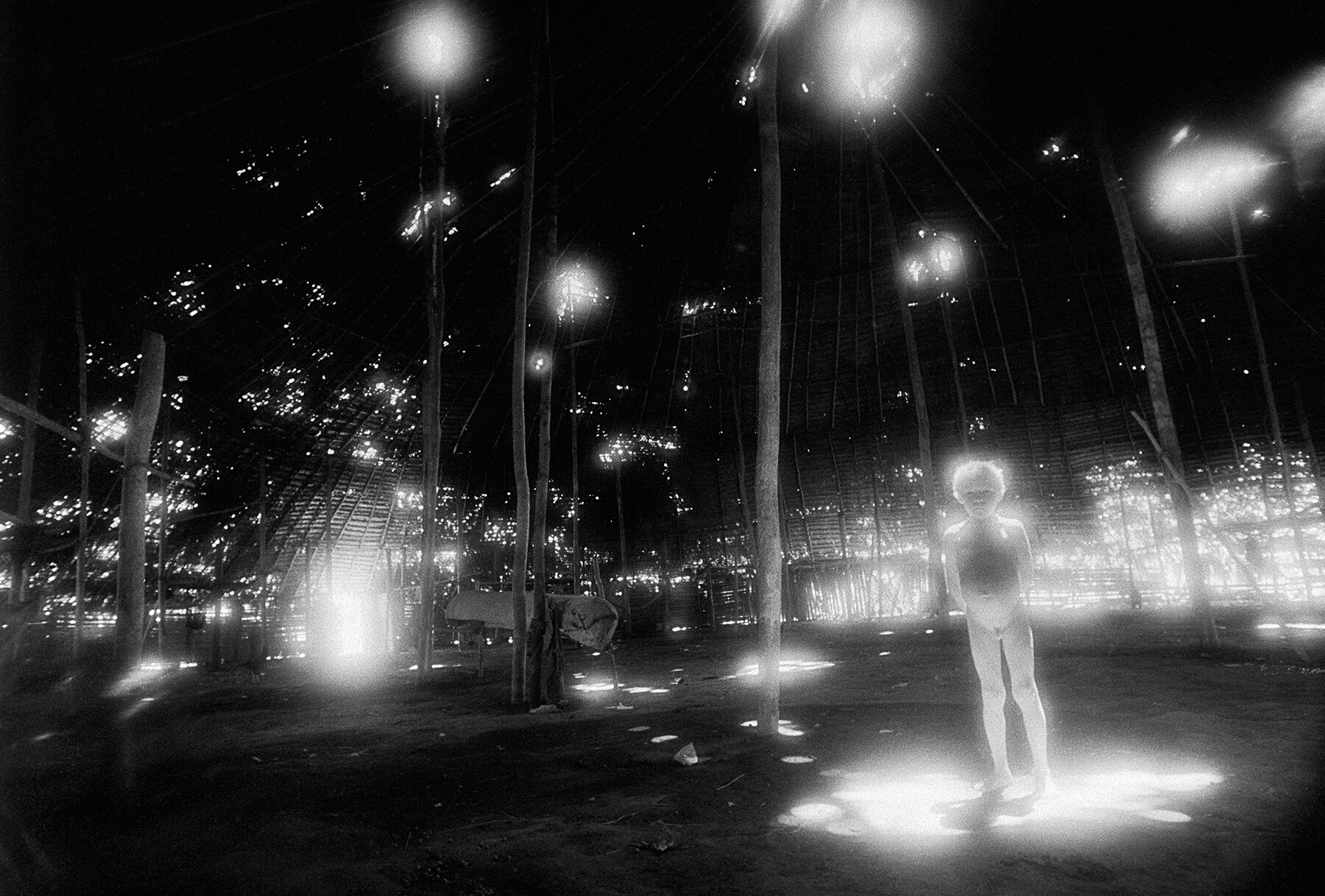
Claudia Andujar: Yanomami – da série A casa (1974) | gelatin & silver analog enlargement on Ilford Multigrade Classic fibre based matte paper, with selenium toning | 40 x 60 cm | © Claudia Andujar / courtesy Galeria Vermelho
project info:
name: Foreigners Everywhere / Venice Art Biennale 2024
curator: Adriano Pedrosa
location: Giardini and Arsenale, Venice
program: 60th International Art Exhibition – La Biennale di Venezia
dates: April 20 – November 24, 2024
exhibition design (589)
venice art biennale 2024 (21)
PRODUCT LIBRARY
a diverse digital database that acts as a valuable guide in gaining insight and information about a product directly from the manufacturer, and serves as a rich reference point in developing a project or scheme.
